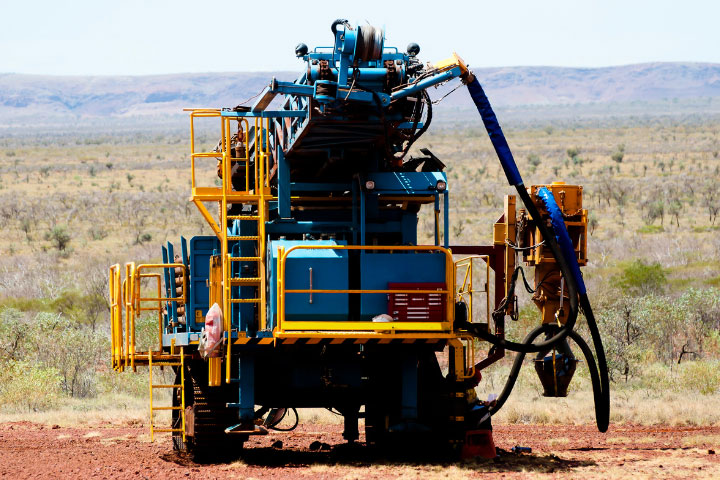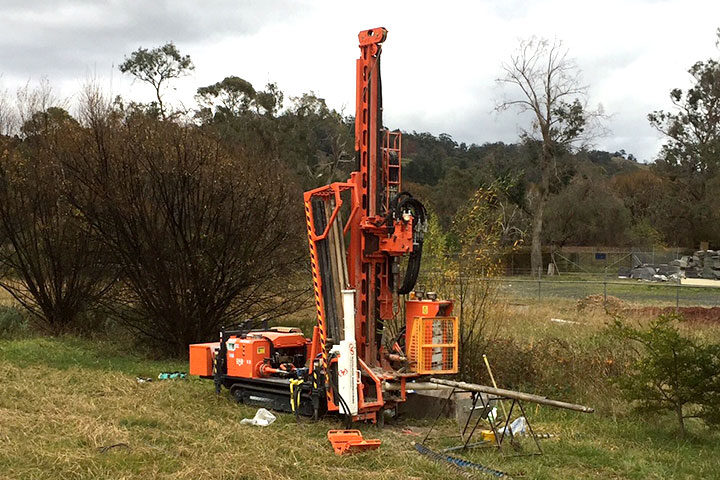
Reverse circulation drilling, or RC, is a form of drilling ideally suited for deep jobs and dense, rocky soils. It uses tungsten-steel drill bits driven by a pneumatic reciprocating piston known as a hammer. RC is a middle ground method, one which requires larger machinery and heavy drill rigs, but achieves excellent penetration, often used for depths of 500m or more. It’s a more expensive and time intensive process than air core drilling, but less so than diamond core drilling. This makes it the preferred method for mineral exploration drilling.
In reverse circulation drilling, the rock is dried out with compressed air ahead of the drill bit. The bit contains an inner tube which delivers dried rock chips up to the surface on the column of compressed air. These chips are sent through a diverter at the top of the column, traveling through a sample hose to collect in a sample bag. This makes it easy to collect samples classified by depth.
One problem which experienced drilling contractors are careful to avoid is the tendency to lose drill bits in the hole. Reverse circulation drill bits are typically 13 to 20 cm in diameter with tungsten buttons that help to penetrate harder material like abrasive rick and shale. These tungsten buttons wear down when going through dense materials. This can cause drilling to slow and the rod string to get caught in the hole. Since reverse circulation drill bits are expensive and the process of recovery can take anywhere from hours to weeks, experienced professional drillers will keep a close eye on their equipment, regularly regrinding the tungsten buttons. This keeps the drilling process smooth, saving man hours and reducing the likelihood of lost time and money.
Water is also used for a number of purposes in reverse circulation drilling. First, it can help to collar a new hole to provide ideal drilling conditions. It also aids in cooling the drill bit, keeping dust down, and helping bring the cuttings to the surface. In some circumstances – especially with sand and very fine cuttings – mud or foam is used to help the fine particles stick together as they are carried to the surface. Light, fine particles often require a hole to be collared as well. A collar is a hollow tube that is placed down the hole around the drill bit, sometimes to depths up to 60m. This prevents the hole from collapsing and bogging down the drill string. If the hole is driven through hard rock, a collar isn’t necessary.
Reverse circulation drilling jobs are more intensive than many other forms of drilling, so they require the attention of a professional drilling company with the right background and expertise. Jobs often require both an auxiliary and support vehicle in addition to the drill rig itself. The support vehicle is the pack mule, containing fuel, water, tools, and equipment needed for the job. The auxiliary vehicle is basically an additional engine and booster for the action of the rig. Though a drill rig contains an onboard air compressor, many reverse circulation jobs are supported by additional compressors as well.
If you’re considering an up-and-coming job or you’d like to know more about your options, feel free to contact us. At BG Drilling, we are dedicated to offering you the highest standard of experience and service for any drilling job, no matter the size.



